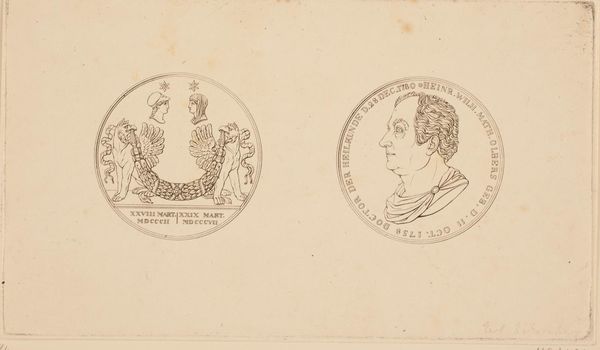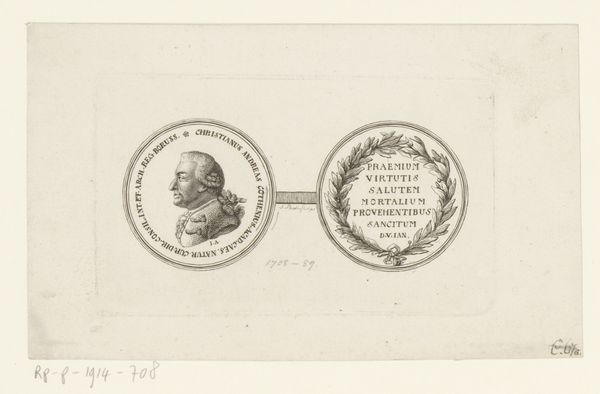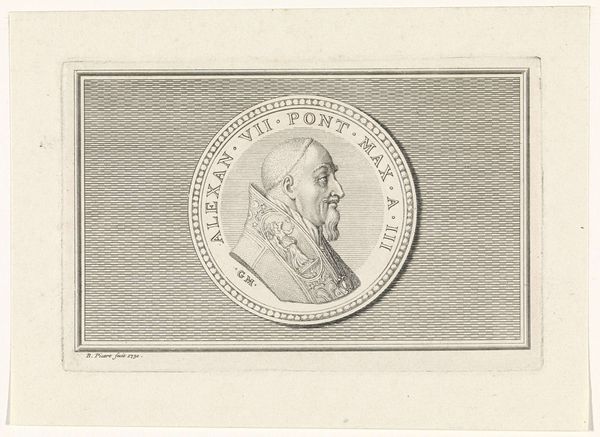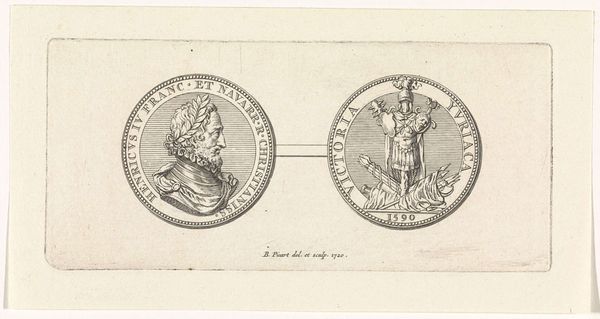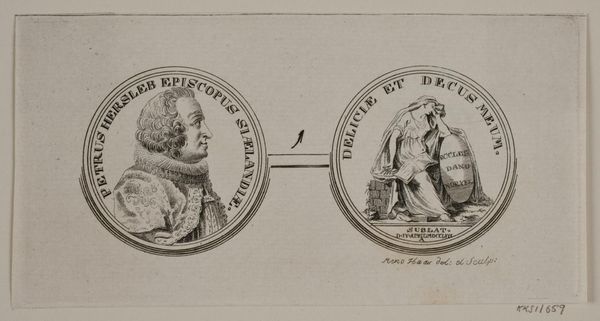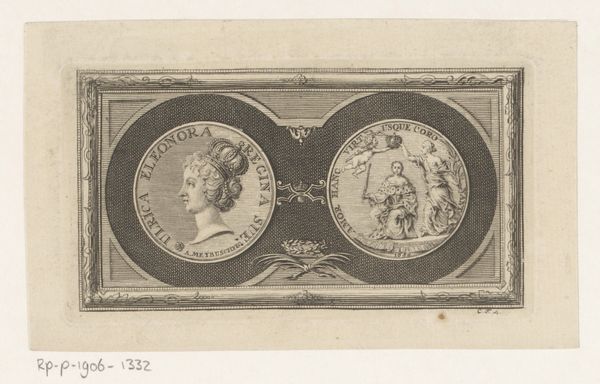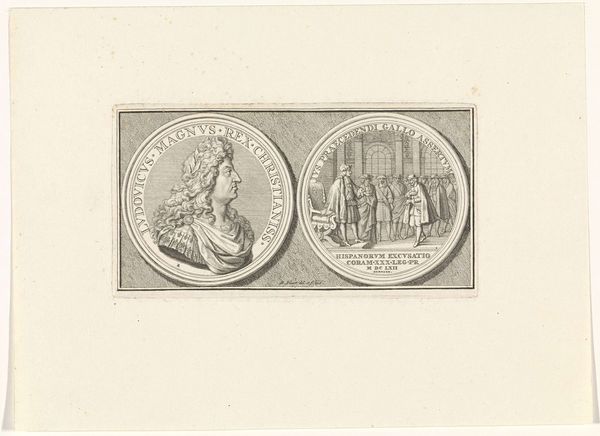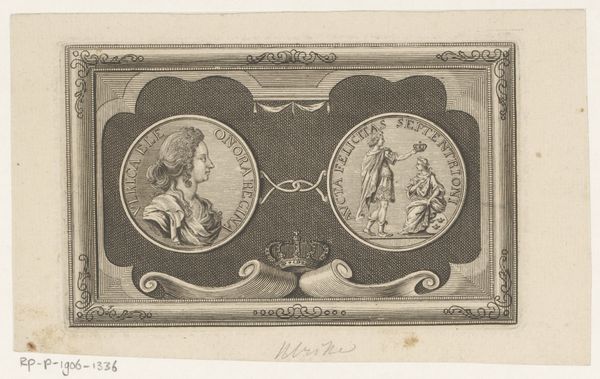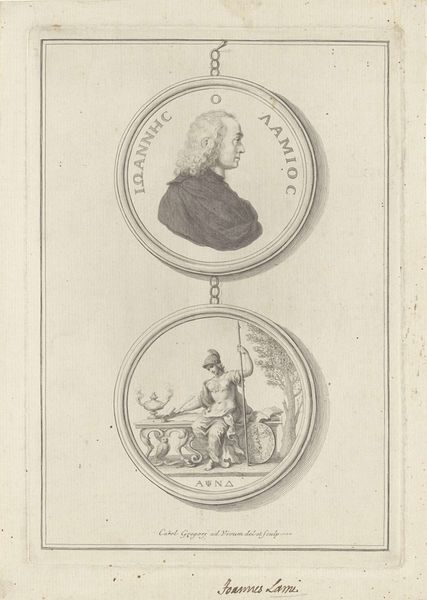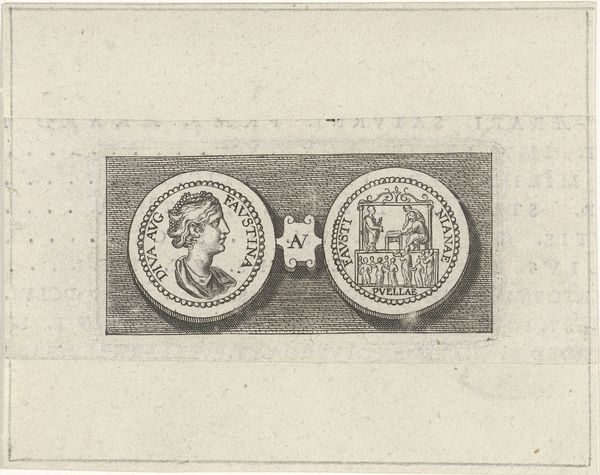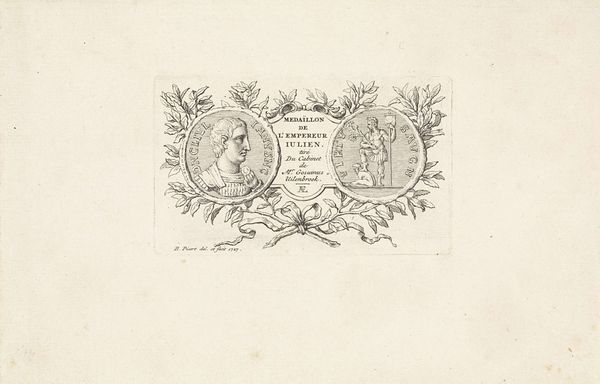
Penning met de portretten van Hendrik III en Catharina de' Medici 1720
0:00
0:00
print, engraving
# print
#
history-painting
#
academic-art
#
engraving
Dimensions: height 61 mm, width 140 mm
Copyright: Rijks Museum: Open Domain
Editor: So, this is "Penning met de portretten van Hendrik III en Catharina de' Medici" by Bernard Picart, dating back to 1720. It's an engraving, currently held at the Rijksmuseum. What immediately strikes me is the formality, the stark profiles presented like currency. What do you see when you look at this print? Curator: What I find compelling is how Picart uses this medallic format to frame the legacy of Henry III and Catherine de' Medici. It's not just a portrait; it's a statement about power, succession, and the enduring nature of the monarchy, carefully constructed and disseminated via print culture. Who do you think this print was made for and how do you think it circulated at the time? Editor: I'm guessing this was for the wealthy educated people of the time? As it is academic in style? Curator: Exactly, academic in style appealing to certain audiences, yes. This type of print often circulated among elites, functioning as a form of political and historical record. The act of replicating these royal portraits as idealized images served a clear propagandistic function too, reaffirming their legitimacy, especially at a time of shifting political alliances. Notice the Latin inscriptions, acting to frame a more informed clientele. What kind of message are they hoping to spread? Editor: So, by looking at how this image was made and who it was for, we can understand the social and political climate of the time? And see the print not as an objective document, but rather, as an intentional work of propaganda, destined for dissemination amongst a small subsection of the French populous at the time. Curator: Precisely. Understanding the context of artistic creation illuminates so much. Hopefully now people will see beyond a simple double portrait, and recognise it is really political messaging, academic in style, hoping to impact on specific targeted audience. Editor: Thanks, that's made me see it in a totally new light. It's no longer just an old drawing. I learned about visual communication in the 1700s through academic art and how it targeted a limited elite portion of the contemporary society. Curator: Likewise. Considering art as a product of cultural forces truly enhances our understanding of history.
Comments
No comments
Be the first to comment and join the conversation on the ultimate creative platform.

